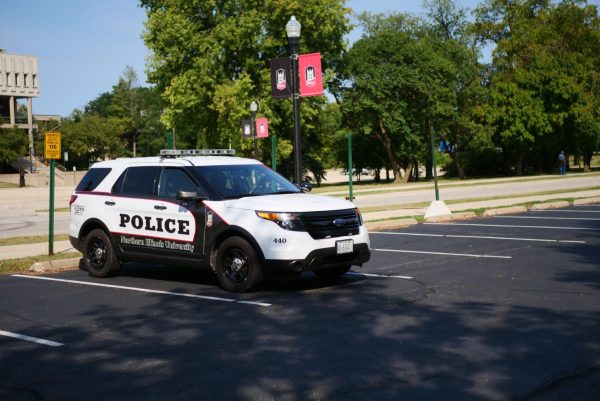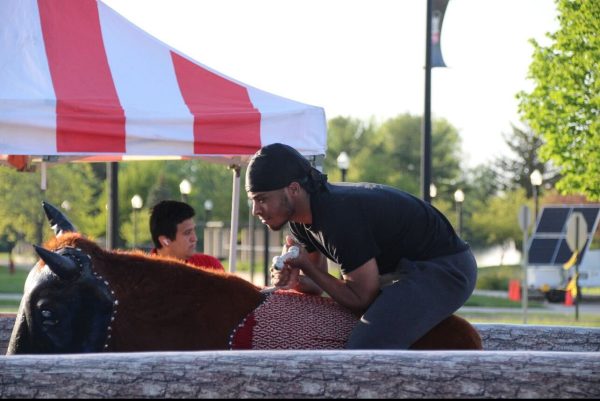Seminar showcases exotic instruments
September 25, 2002
Past the Study Abroad fair and into the Holmes Student Center’s Regency Room, which was softly lit by a large iron-cast chandelier, there was a semi-circle of chairs surrounding a projector.
Along the back wall, teachers milled about tables laden with goodies, snacking and talking about the coming lecture. Then Presidential Teaching Professor Kuo-Haung Han walked to the podium and teachers hurried to their seats.
The “Everyone Can Learn Music: My Approach to World Music Teaching” seminar had begun.
“World music is traditional and folk music, as opposed to ‘fine art’ western classical music,” Han said, as he talked about how he engages his students by connecting world music with popular icons from today, including bands, actors and even the Hindu god Shiva, who is not only the god of creation and destruction, but also the god of dance.
He then moved to a slide show, showing pictures of various instruments from the world that he focuses on in his class, including a flute that is played with the nose.
“Nose flutes help win over the girls,” Han said with a laugh.
With two rooms of exotic instruments in the music room, Han has had his share of odd instruments. He brandished a snake charmer’s flute, or pungi.
“A student, probably a biology student, told me snakes don’t hear,” he said, while showing how Indian music has no harmony but instead, an element called drone, which is used in the pungi.
Perhaps the strangest part of the slide show was a full description of how to make a bagpipe, using the original materials: a whole goat – head and all.
“I keep students busy, so that they have no time to read the Northern Star,” said Han, earning him laughs from the all-teacher crowd.
Nearing the end of his lecture, Han and his assistants handed out angklungs to all the audience members. The angklung is an odd wooden instrument perhaps a foot in height.
“When I asked the natives why it was called a angklung, they couldn’t answer well,” Han said. “They said it was because it made a sound like ‘klung, klung, klung.’”
Han then played some angklung music through a projector and led the audience through the song “Edeweiss.” The 20 or so teachers then attempted to play music in harmony. They enjoyed it so much that there was a request to play another song.
Han merely smiled and put the music for an Indonesian song called “Going to Town” on the projector and led them through it, to much applause.
During the final 15-minute question-and-answer session, one teacher stood up and told Han, “I want to thank you very much. When I walked in the door, I had no music talent.”
Han laughed and told her, “That’s why the seminar is called, ‘Everyone can learn world music.’”
For more information on exotic instruments, visit www.aiya.com, which includes the country, history and the music of many instruments from around the world.













